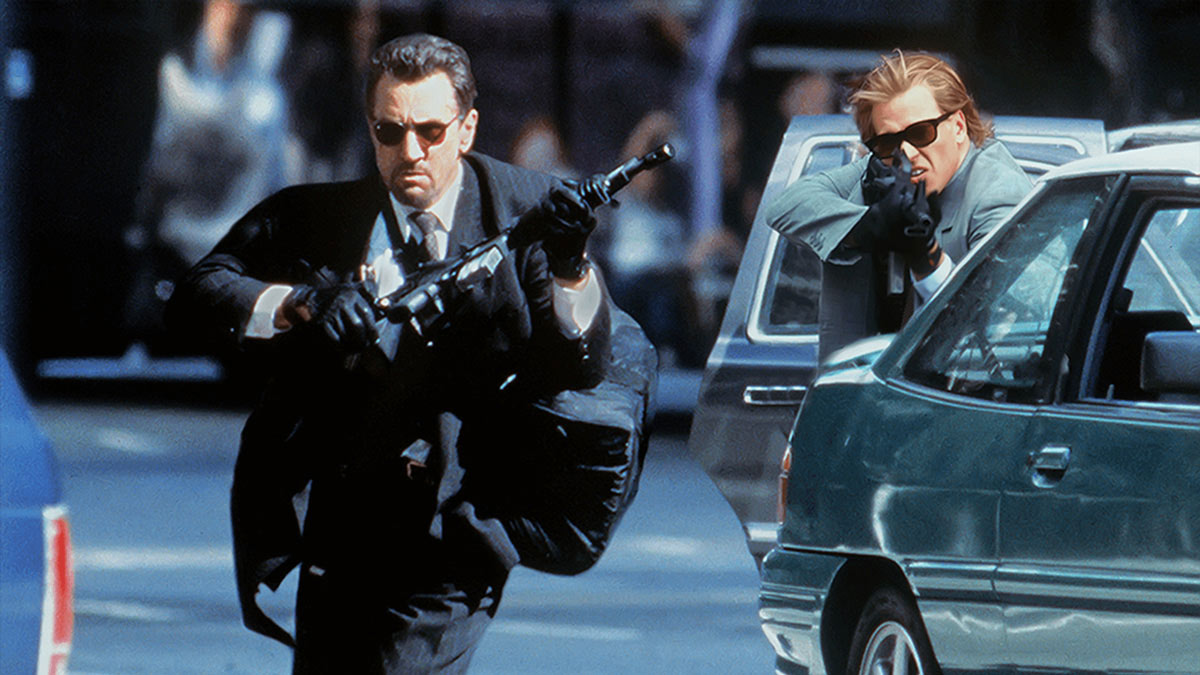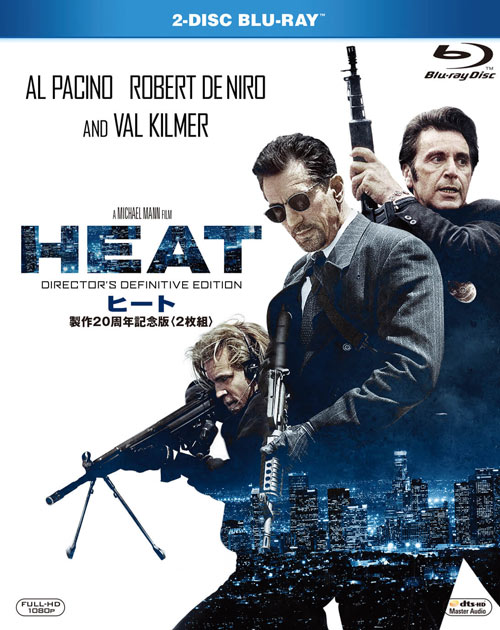
(C)2017 Twentieth Century Fox Home Entertainment LLC. All Rights Reserved.
The criminal played by Robert De Niro in Heat was a real person! A crime saga built with a thorough focus on authenticity.
2018.02.15
If you can't load bullets as fast as him, I'll kick you out!
The 12-minute shootout that takes place in the streets of Los Angeles in the middle of ``Heat'' is a legend in movie history. This gunfight, which used 800 to 1,000 blank shots per take, was revolutionary in its power and realism. One of the standout scenes is a scene in which Val Kilmer shoots an assault rifle in full auto mode, changing magazines in just three seconds. This magazine exchange was so spectacular that there is an anecdote that a Marine Corps instructor told his soldiers, ``If you can't reload as fast as him, I'll kick you out!''
In addition to this scene, ``Heat'' has a number of impressive gun action scenes, but what made them successful was the combat shooting training that the actors underwent.
Combat shooting refers to practical shooting techniques, and is a systematic compilation of techniques used when people actually shoot each other. Michael Mann took this seriously from his first film as a director , The Jack Reacher (1981).
The actors in Heat trained for three months in combat shooting, but De Niro's criminal team and Pacino's cop team had separate trainers. This was done because there are subtle differences in how police and criminals shoot and handle guns, and to prevent the two opposing teams from creating an atmosphere of familiarity.

“Heat” (C)2017 Twentieth Century Fox Home Entertainment LLC. All Rights Reserved.
Even the homeless were asked to perform! “Real” people in “real” locations
But perhaps the biggest effect of the 12-minute gunfight was its location. An entire main thoroughfare in an actual Los Angeles business district was rented out for a weekend, allowing for a large daylight gunfight to take place in the city. The sense of distance between a team of criminals rushing through a main street while shooting at each other, and the detectives chasing them. The deafening sound of gunfire echoed through the valley between buildings. The effect created by the realistic location was tremendous.
Mann wanted to realistically portray the atmosphere of the city of LA, so he chose to shoot most of the scenes in real locations. Indoor scenes are often shot in studio sets where the sound and lighting can be easily controlled, but Mann insisted on shooting on location, which is costly, and the film was shot in 106 locations.
Furthermore, the extras who fit into the frame with the main actors were also authentic, with the police officers conducting on-site inspections and the nurses working at the hospital being real police officers and nurses, rather than actors. He also asked actual homeless people he met while scouting locations to appear in the film. The homeless people who witness De Niro's crime at the beginning of the movie are actually homeless people who lived in the filming location.
Director Michael Mann relentlessly tries to envelop his work with an aura of authenticity. This aura affects the actors' performances, increasing their realism and, as a result, Heat heat to the fiction on screen. The audience is touched by the "heat".
Text: Tetsuya Inagaki
TV director. My personal goal is to realize a documentary project that depicts the obsessions of manga and movie creators. Programs he has directed in the past include ``Gekiga The Godfather : The Man Who Revolutionized Manga'' (WOWOW) and ``Takeshi's Birth: Master of Oira and Asakusa'' (NHK). Currently, he is planning a documentary about a famous manga artist.

Heat production 20th anniversary edition <2 disc set>
Released on March 3, 2017 (currently on sale) Suggested retail price ¥5,980 + tax
(C)2017 Twentieth Century Fox Home Entertainment LLC. All Rights Reserved.

